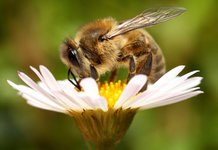
Honey is recommended for use throughout the year. However, it is especially popular with people in the fall and winter.
Along with the growth in demand, the growth in sales of falsified, not real honey is also increasing!
I will say right away that with an accuracy of 100% fake honey, it is impossible to determine at home. This requires laboratory analysis.
However, a crude fake can still be distinguished from real honey.
Fake honey is most often made from sugar syrup, with the addition of various flavors, flavors, colorants, starch, thickeners, etc. And here are some tips on how to spot a fake.
1. Visual inspection

Honey should be uniform in consistency, there should be no sediment, as well as foam on top. The presence of foam does not mean that honey is not natural. Most likely, he was simply pumped out by a careless beekeeper ahead of time. This product has a high moisture content, and honey can ferment.
Honey should not exfoliate - this is also a bad indicator. But the color of honey can be different, since it depends on what colors the bees brought nectar from.
2. By weight
When it comes to buying honey, forget about liters, it is always measured in kilograms!
In 1 liter - 1.44 kg of honey. But for ease of remembering, you can round this figure to 1.5 kg. Unnatural honey, as a rule, does not correspond to this indicator of weight.
3. To the touch

Drop a drop of honey on the back of the brush and rub it. Honey, like a good cream, should be completely absorbed into the skin without leaving a damp or oily stain. During the transfusion, honey should go downhill.
4. To taste
There are hundreds of types of monofleur honey, and polyfler honey, which bees collected from different colors (such honey is also called blended honey), even more.
Try to buy honey from plants that grow in your area. The taste of such a product will be very familiar to you and you can easily determine the fake.
5. The state of aggregation

Honey is liquid and solid. Hard honey, it is also called shrunken. The cage can be fine-grained, coarse-grained and lard-shaped.
No need to be afraid of honey that has settled, on the contrary, this is one of the indicators that it is natural.
The speed of cages is different. For example, honey from rapeseed sits within a week after pumping, and from sunflower for a month. There is honey that retains a liquid state for a very long time, for example with white acacia.
In spring and summer, buy only liquid honey. Settle honey at this time will say that it is last year. And in the fall and winter, on the contrary, buy sown, liquid honey at this time, will indicate that the beekeeper heated it before selling.
After heating above 42 degrees, honey almost completely loses its beneficial properties.
On a note! If the visual inspection, weighing and taste test are not in doubt, still do not rush to take a large amount of honey from an unverified beekeeper.
To get started, buy a small jar, and at home do some simple experiments to make sure the product is natural.


























